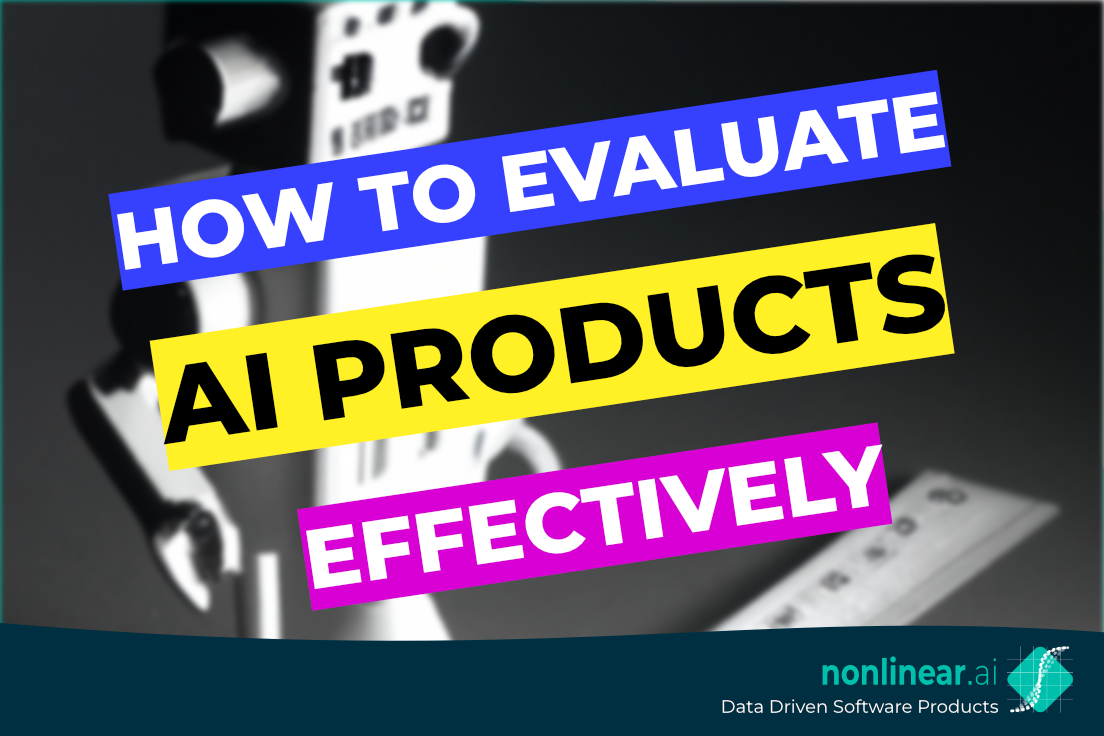Introduction
Artificial Intelligence (AI) has become increasingly prevalent in our digital lives, powering numerous products and services. However, evaluating the effectiveness of AI-based products poses unique challenges compared to traditional digital products. While the latter can be assessed based on straightforward outcomes, AI products require a more nuanced approach. In this blog post, we will explore the importance of defining key metrics and share insights on effectively evaluating the quality of AI models.
Defining Key Metrics
When developing AI-based products, one of the initial steps is to define key metrics. These metrics serve as benchmarks for evaluating the performance of AI models. To illustrate, let's consider a recommender system in an online shop. Suppose the system recommends four items to a user, and three of the recommendations turn out to be unsatisfactory, while one is excellent. How do we determine whether this recommendation system is good or bad?
In this scenario, a key metric could be the percentage of "good" recommendations. By establishing this metric, we can objectively measure the quality of the AI model. However, defining effective metrics is not always a straightforward task. It requires careful consideration of the specific use case, user preferences, and business goals.
Measuring and Iterating on AI Models
Once the key metrics are defined, they serve as a compass for measuring and iterating on the quality of AI models during development. The evaluation process involves analyzing the model's performance against the established metrics and identifying areas for improvement.
Iterative development allows for continuous refinement of AI models, aiming to enhance their accuracy, efficiency, and overall effectiveness. Feedback loops, user testing, and incorporating real-world data are crucial components of this process. By continually monitoring the metrics and iterating on the AI models, developers can strive for superior performance.
Monitoring AI Models in Production
The role of metrics extends beyond the development phase and into the production environment. It is essential to monitor the quality of AI models in real-world usage scenarios to ensure they continue to provide valuable and reliable outputs.
By setting up appropriate monitoring systems, anomalies or deteriorating performance can be detected. If the metrics indicate a decline in performance, it suggests that the AI model might be faulty or require recalibration. Prompt identification of such issues allows for timely interventions and fixes, ensuring the continued provision of accurate and reliable results.
Challenges in Metrics Definition
Defining good metrics for evaluating AI models can be a challenging task. The complexity arises from several factors, including the nature of the problem being solved, the availability and quality of data, the subjectivity of user preferences, and the ever-evolving technological landscape.
It is crucial to strike a balance between metrics that capture essential aspects of AI performance and those that align with the overall goals of the product. A thorough understanding of the problem domain, the target audience, and the limitations of the AI model is necessary to select appropriate metrics.
Conclusion
Evaluating the effectiveness of AI-based products requires a nuanced approach centered around well-defined metrics. By establishing key metrics, developers can objectively measure, iterate, and improve the quality of AI models during development. Furthermore, ongoing monitoring of AI models in production ensures that they continue to provide accurate and reliable results.
While the task of defining effective metrics can be challenging, a deep understanding of the problem domain and a clear alignment with business goals are vital. As AI technology advances, it is essential to evolve and adapt evaluation strategies to ensure that AI products deliver optimal performance.
By continually refining our approach to evaluating AI models, we can decipher the puzzle and unlock the true potential of AI in driving innovation and enhancing user experiences across various industries.



